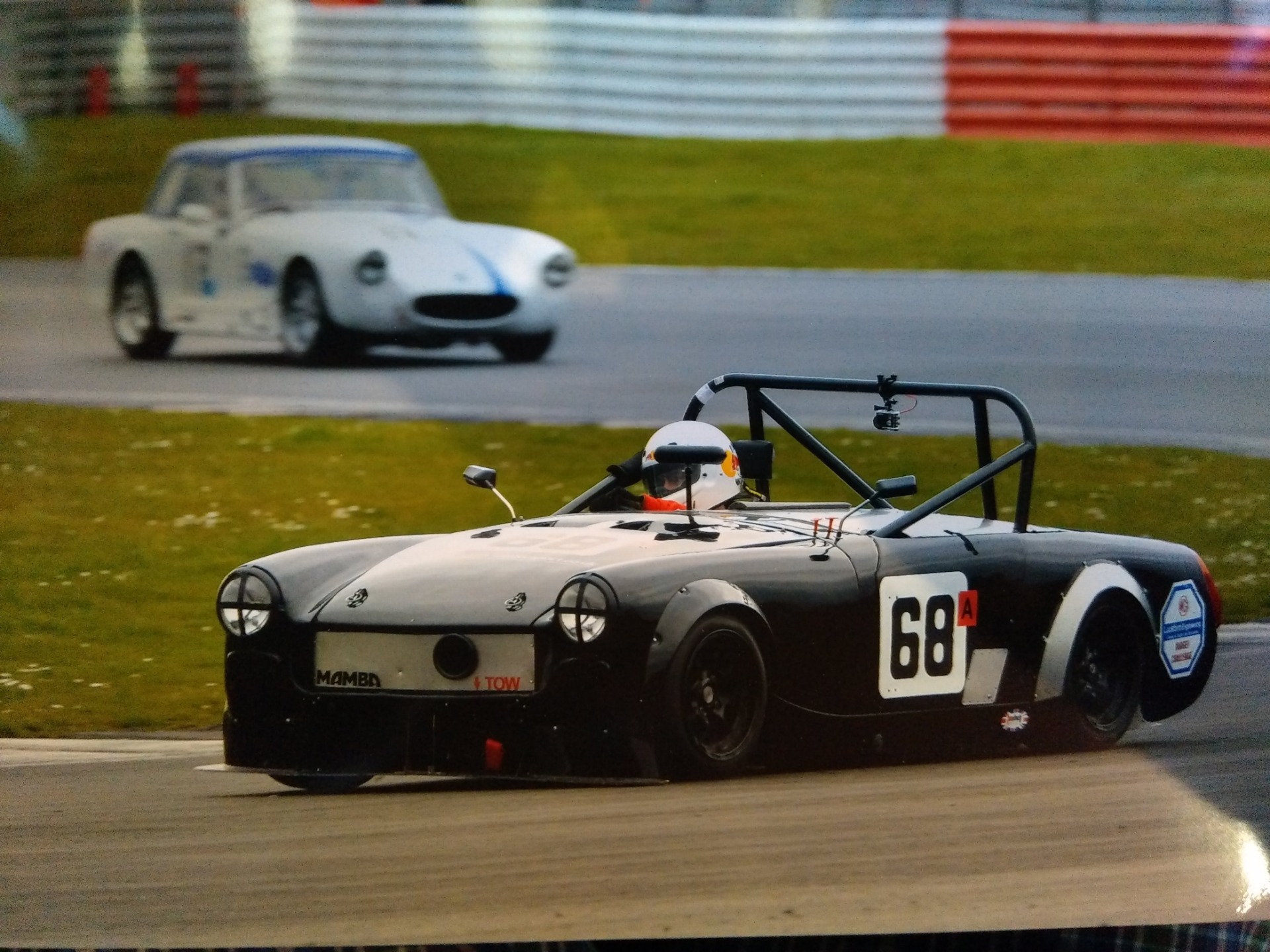Camber gain in roll

Correct camber settings for different tyres and spring / anti-rollbar combinations are often difficult to achieve. They tend to be a compromise and often down to personal preference as it not only affects grip but also the feel of the steering.
What is often overlooked by the clubman racer is that the camber is actually dynamic.
We happily set up the car with a static camber setting and then drive around with the car leaning over on the door handles without assessing what affect the roll of the car has on the camber change.
Unfortunately for us Spridget drivers, the Spridget is particularly effected by Camber-Gain-In-Roll (CGIR) due to the relatively short length of the suspension links and the unequal length wishbones. As the body rolls, the outside wheel moves up in relation to the chassis and the shorter top link increases camber to compensate and keep the contact patch level with the road.
Standard setup
On a Spridget the standard setup is for standard ride height, standard spring and most importantly standard tyres. Because the original tyres were quite flexible, the suspension gives quite a lot of CGIR to lean the wheel into the corner. On a race car with wider tyres and less tyre flex this means the inner edge of the tyre gets overworked.
So if you are seeing a lot of inner edge tyre wear / blistering / melting then you may consider the CGIR to be a culprit.


On a lowered car the problem actually gets a bit worse because the links are further from horizontal so the CGIR is increased due to the differential arcs of the upper and lower unequal length links.
In the case of a custom-built car this isn't too much of a problem - you can fix it by fabricating wishbones and pickup points to correct the geometry but for most UK series this isn't allowed. Even in the case of a class A modsports car the lower pickup points must be used so the correction has to be achieved elsewhere.
On other types of car it is possible to use a 'drop spindle' upright which allows the links to run level by raising the wheel centre on the upright but this is difficult to achieve on the midget upright.
So that leaves solving the simultaneous equations for the geometry of the front suspension through its usable range to calculate a new position for the inner pivot of the top link.
Which is what we did to come up with our Midget adjustable camber front suspension kit and our Midget to MGB damper conversion kit . By changing the vertical position of the damper unit they reduce the inequality of the link angles and reduce the CGIR to maximise grip of the tyre throughout the movement range. They also allow the desired amount of static camber to be setup depending on the recommendations from the tyre manufacturer (and the feel for the driver).
Tyre & static (negative) camber settings (with CGIR correction)
Typically the greater amount of -ve camber the more 'feel' but the less outright grip
Avon crossply slicks 7.0/20.0-13: 1.75 : 2.25 degrees
Avon crossply slicks 8.0/19.5-13 : 1.25 - 1.75 degrees
Avon crossply slicks 9.0/20.0-13 : 1.5 - 2.0 degrees
Yokohama A048 175/60R13 : 2.0 - 3.0 degrees
Avon ZZR 185/60R13 : 2.0 - 2.5 degrees
A side note - the camber gain is also affected by the caster angle and kingpin inclination when the wheels are not in a straight line but this effect is proportionally much smaller than the CGIR discussed above in typical circuit racing situations.
